Explanation of Leverage and Margin and How They Work in Forex Trading
Leverage and margin are fundamental concepts in forex trading that allow traders to access significant positions without needing to commit the full amount of capital. EightCap Leverage, an essential aspect of trading with EightCap, magnifies both potential profits and losses. It’s crucial for traders to comprehend the mechanics and implications of leverage to navigate the forex market effectively.
What is Leverage?
Leverage in forex trading is essentially a loan provided by the broker to the trader, enabling the trader to open a much larger position than their own capital would otherwise allow. It is typically expressed as a ratio, such as 50:1, 100:1, or even higher.
Example: If a trader has $1,000 in their trading account and uses 100:1 leverage, they can control a position worth $100,000.
What is Margin?
Margin is the amount of capital required to open and maintain a leveraged position. Think of it as a good faith deposit, or the collateral, which is held by the broker while the trade is open.
- Margin Requirement: This is usually expressed as a percentage of the total position. For instance, if the margin requirement is 1%, and you want to open a position worth $100,000, you will need to deposit $1,000.
Benefits and Risks Associated with Using High Leverage
Leverage magnifies both gains and losses, which introduces significant risk, particularly if the market moves against your position.
Benefits of High Leverage
- Capital Efficiency: High leverage allows traders to make substantial profits from relatively small price movements with a much lower initial capital.
- Enhanced Returns: It increases the potential return on investment, enabling traders to significantly amplify profits on successful trades.
Risks of High Leverage
- Magnified Losses: Just as leverage can increase profits, it can also magnify losses. A small adverse move in currency prices can result in substantial losses, exceeding initial investments.
- Margin Calls: If the market moves against a leveraged position and the account’s balance falls below the margin requirement, a margin call will be issued. This requires the trader to add more funds to their account to maintain their positions, or the broker may close the position to limit the loss.
Managing Leverage Risks
- Prudent Use of Leverage: Choose a leverage level that reflects your risk tolerance and trading style. More conservative traders typically use lower leverage.
- Risk Management Tools: Utilize stop-loss orders to limit potential losses. Continuously monitor open positions and adjust leverage and margin requirements in response to changing market conditions.
- Education and Practice: Understand the mechanics of leverage and margin thoroughly. Use demo accounts to practice trading with leverage without financial risk.
Understanding leverage and margin is critical for all forex traders, particularly beginners, as they navigate the complexities of the forex market. Proper management of these elements is key to successful trading.

Overview of EightCap Leverage Options
Detailed Description of the Leverage Options Available with EightCap
EightCap offers a range of leverage options that cater to different types of traders, from cautious beginners to more aggressive seasoned traders. Understanding the leverage settings available will help traders effectively manage their trading strategies and risk exposure.
EightCap Leverage Options
EightCap provides leverage ratios that can go as high as 500:1 depending on the type of account and the client’s geographic location. Regulatory environments and individual trader profiles may affect the maximum leverage offered:
- Standard Leverage: For most retail traders, common leverage ratios include 100:1 or 200:1.
- Higher Leverage: Professional or non-EU traders might access higher leverage options such as 400:1 or 500:1.
These options give traders significant flexibility in terms of capital usage and risk management.
How to Choose the Right Leverage Setting for Your Trading Style and Risk Tolerance
Choosing the appropriate leverage is crucial in forex trading as it directly impacts the risk level and the potential for returns.
Assessing Your Trading Style and Risk Tolerance
- Trading Style: Day traders and scalpers, who typically seek quick profits from small price changes, might prefer higher leverage. In contrast, long-term traders may opt for lower leverage to reduce risk exposure over time.
- Risk Tolerance: This is a personal measure and varies widely among traders. Those with a lower tolerance for risk might choose a lower leverage ratio to protect their capital from rapid losses.
Steps to Select the Appropriate Leverage
- Evaluate Financial Goals: Consider what you aim to achieve with your trading. High leverage can mean higher returns but also higher risks.
- Consider Your Experience Level: Less experienced traders should start with lower leverage to minimize risks as they learn the nuances of market movements.
- Risk Management Strategy: Define how much of your total capital you are willing to risk in a single trade. Typically, it is advisable not to risk more than 1-2% of your capital on any single trade.
- Simulate Different Scenarios: Using a demo account to test how different leverage levels affect your trading outcomes can be highly informative.
- Consult with Professionals: If you are unsure, consider seeking advice from financial advisors or trading experts.
Implementing Your Choice
Once you have determined the optimal leverage for your trading strategy and risk tolerance:
- Set Up Your Account: Adjust the leverage settings in your EightCap account accordingly. This can usually be done from the account settings section on your trading platform.
- Monitor and Adjust: Continuously review your leverage settings based on your trading performance and any changes in your risk tolerance or financial goals.
Choosing the right leverage is a dynamic decision that can significantly influence your trading success. By carefully considering your financial goals, trading style, and risk tolerance, you can select a leverage setting that enhances your trading strategy while managing potential risks effectively.
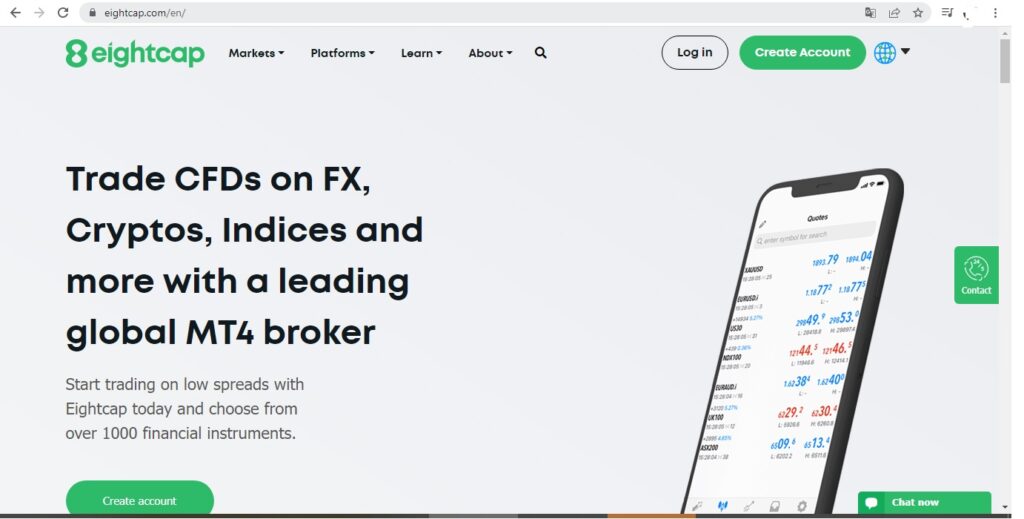
Setting Up EightCap Leverage on Your EightCap Account
Step-by-Step Guide on How to Set or Change Leverage Levels in Your EightCap Trading Account
Adjusting the leverage on your EightCap account is a straightforward process, but it’s important to understand each step to ensure you’re configuring your trading environment to best suit your trading strategy and risk management needs.
Accessing Account Settings
- Log In: Start by logging into your EightCap client portal. You will need your username and password.
- Navigate to Account Settings: Once logged in, locate the ‘Accounts’ section, which typically displays all your trading accounts and their details.
- Select the Account: Choose the account for which you want to adjust the leverage.
Adjusting Leverage
- Find Leverage Options: Within the account settings, there should be an option or a drop-down menu labeled ‘Leverage’ or ‘Change Leverage’.
- Choose Your Leverage: Select the desired leverage ratio from the available options. This could range from as low as 20:1 to as high as 500:1, depending on the account type and regulatory restrictions.
- Confirm Changes: After selecting your new leverage, there will likely be a confirmation step where you must verify your choice. Confirm the changes to apply the new leverage setting.
- Review and Accept Terms: Some changes in leverage might require you to accept updated terms and conditions related to the risks and regulations of using increased or decreased leverage.
Final Steps
- Save Changes: Ensure that all changes are saved correctly. Some platforms might require you to click a ‘Save’ or ‘Apply’ button.
- Notification: Typically, the change in leverage is immediate, but in some cases, it might take a short time to reflect. You should receive a notification or confirmation email from EightCap confirming the adjustment.
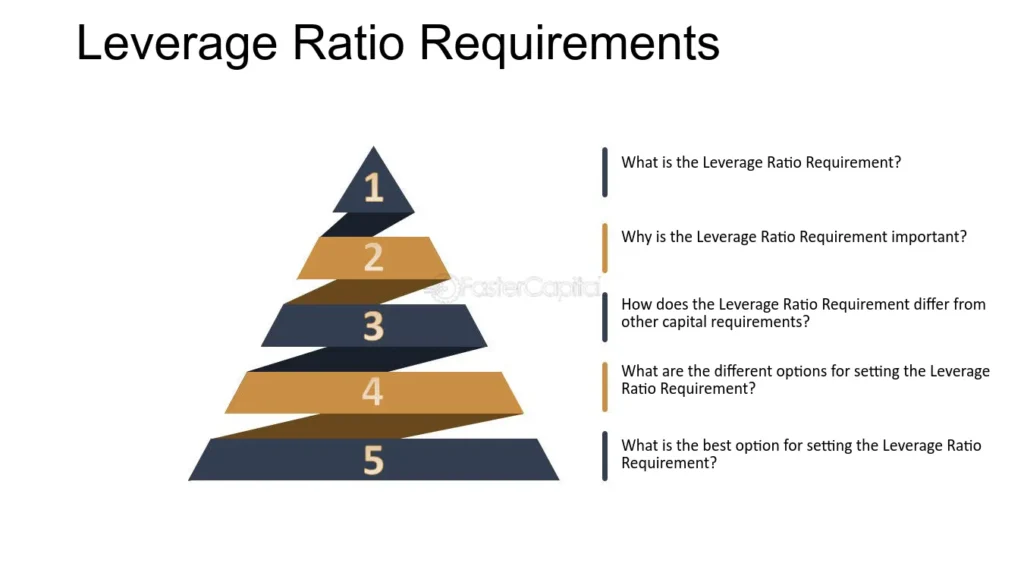
Understanding the Requirements and Limitations for Different EightCap Leverage Levels
Regulatory Requirements
- Jurisdictional Limits: Depending on your country of residence, there may be regulatory limits on the maximum leverage you can use. For instance, traders in the European Union are subject to ESMA regulations which cap leverage at lower levels than those available to traders in other regions.
- Account Type: Retail and professional accounts often have different leverage options due to the different risk profiles and qualifications required for each.
Risk Considerations
- Higher Risk with Higher Leverage: It’s crucial to understand that higher leverage can lead to higher profits but also significant losses, potentially exceeding your initial investment.
- Margin Closeout: Know the margin requirements and the broker’s policy on margin closeouts. If the market moves against your position, and your account equity falls below the margin requirements, EightCap may close your positions to prevent further losses.
Monitoring and Adjustment
- Regular Review: It’s wise to regularly review your leverage settings as your trading strategy evolves or as market conditions change.
- Risk Management Tools: Consider using stop-loss orders and other risk management strategies to protect your investments, especially if using higher leverage levels.
Adjusting the leverage on your EightCap account allows you to tailor your trading approach to align with your risk tolerance and market strategy. Always approach leverage adjustments with a clear understanding of the increased risks and regulatory constraints.

Risk Management with High EightCap Leverage
Importance of Risk Management Strategies in High-Leverage Trading
Trading with high leverage can amplify profits significantly, but it also increases the potential for substantial losses, especially in the volatile forex market. Effective risk management is crucial to protect capital and ensure long-term trading viability.
Amplified Risks
- Increased Volatility: Small price movements can lead to significant changes in account balances when high leverage is used.
- Margin Calls: If the market moves against your position, you might quickly hit the margin limit, prompting a margin call where you must either add more funds or close positions to cover the losses.
Tools and Techniques to Manage Risks
Proper risk management strategies can help mitigate the dangers associated with high leverage trading. Here are some essential tools and techniques:
Stop-Loss Orders
A stop-loss order automatically closes an open position at a specified price to prevent further losses if the market moves unfavorably. It is one of the most effective tools for managing risk with high leverage.
- Placement: Set stop-loss orders at levels that allow some market fluctuation but protect from larger downturns. A common technique is to place a stop-loss at a price level that if reached, would indicate that the initial trade hypothesis was incorrect.
Position Sizing
Proper position sizing ensures that you are not risking more than you can afford to lose on any single trade.
- Percentage Risk: A common rule is to risk only a small percentage of your total account on a single trade, typically between 1% and 2%. This helps ensure that even a series of losses won’t significantly deplete your capital.
- Calculator Use: Utilize a position sizing calculator to determine the appropriate trade size based on your specific risk tolerance and stop-loss placement.
Leverage Management
Adjusting the amount of leverage used based on your trading style and the specific market conditions can significantly affect risk levels.
- Conservative Leverage Use: Especially in highly volatile markets, using less than the maximum leverage available can provide more room to maneuver when the market moves unexpectedly.
- Flexible Leverage: Consider adjusting leverage according to the confidence level and probability of success of your trading signals. Less leverage for less certain trades can reduce risk.
Risk/Reward Ratio
The risk/reward ratio helps traders assess the potential reward for every dollar risked.
- Optimal Ratios: Look for trades where the potential reward justifies the risk. A common benchmark is a risk/reward ratio of 1:3, meaning the potential profit is three times the potential loss.
- Strategy Alignment: Ensure that the risk/reward ratio aligns with your overall trading strategy and success rates. This alignment will help manage and mitigate the compounded risks associated with high leverage.
Continuous Education
- Market Understanding: Constantly educate yourself about market conditions, trading techniques, and financial news. An informed trader is better positioned to manage risks effectively.
- Simulations and Backtesting: Use simulations to practice your trading strategies under various market conditions without financial risk. Backtesting can help you understand how your strategy might perform based on historical data.
Emotional Control
- Trading Plan Adherence: Stick to your trading plan, and do not let emotions drive your trading decisions. High leverage can tempt traders to make impulsive trades, which can lead to amplified losses.
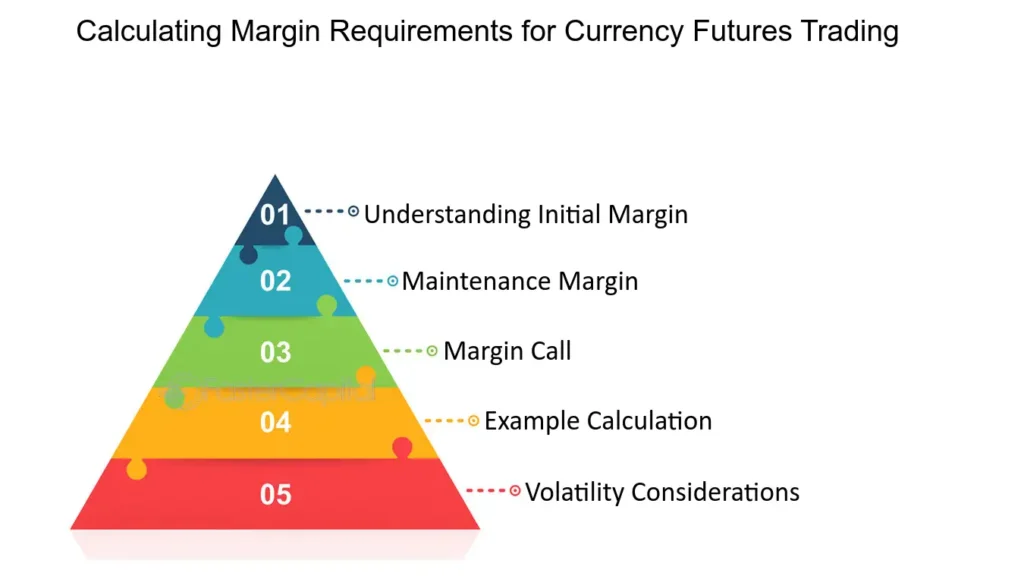
Calculating Margin Requirements
How to Calculate Margin Requirements for Different EightCap Leverage Levels
Understanding how to calculate margin requirements is crucial for effective risk management, especially when trading with leverage. Margin is essentially the amount of capital required to open and maintain a position, and it is directly influenced by the leverage level you choose.
Formula for Margin Requirement
The margin required to open and maintain a position can be calculated using the following formula:
[ \text{Margin Required} = \frac{\text{Trade Size}}{\text{Leverage Ratio}} ]
Where:
- Trade Size is the total value of the position you wish to open.
- Leverage Ratio is the factor by which you are multiplying your available capital to open a larger position.
Understanding Leverage Ratios
The leverage ratio is expressed as a ratio, such as 50:1, 100:1, 200:1, etc. This means that for every dollar of your own money, you can control $50, $100, $200, etc., of traded value, respectively.
Examples of Margin Calculations for Typical Trades on EightCap
Let’s look at a couple of practical examples to understand how margin requirements work at different leverage levels for forex trades on EightCap.
Example 1: Trading with 100:1 Leverage
- Scenario: You want to open a position worth $100,000 in EUR/USD.
- Leverage: 100:1 leverage.
Calculation:
[ \text{Margin Required} = \frac{\$100,000}{100} = \$1,000 ]
With 100:1 leverage, you would need $1,000 in your trading account as margin to open a $100,000 position.
Example 2: Trading with 200:1 Leverage
- Scenario: You want to open a position worth $50,000 in USD/JPY.
- Leverage: 200:1 leverage.
Calculation:
[ \text{Margin Required} = \frac{\$50,000}{200} = \$250 ]
With 200:1 leverage, you would need $250 as margin to control a $50,000 position.
Adjusting Margin Calculations for Different Currencies
When trading pairs where the USD is not the base currency, or when your account is denominated in a currency other than USD, you’ll need to adjust the margin calculation to reflect the exchange rate.
- Scenario: You want to trade GBP/USD, the exchange rate is 1.3000, and your account is denominated in GBP.
- Trade Size: $100,000 (approximately £76,923 at the exchange rate of 1.3000).
- Leverage: 100:1.
Calculation:
[ \text{Margin Required in GBP} = \frac{£76,923}{100} = £769.23 ]
This calculation ensures that the margin requirement is correctly adjusted for the account’s currency and the current exchange rate.
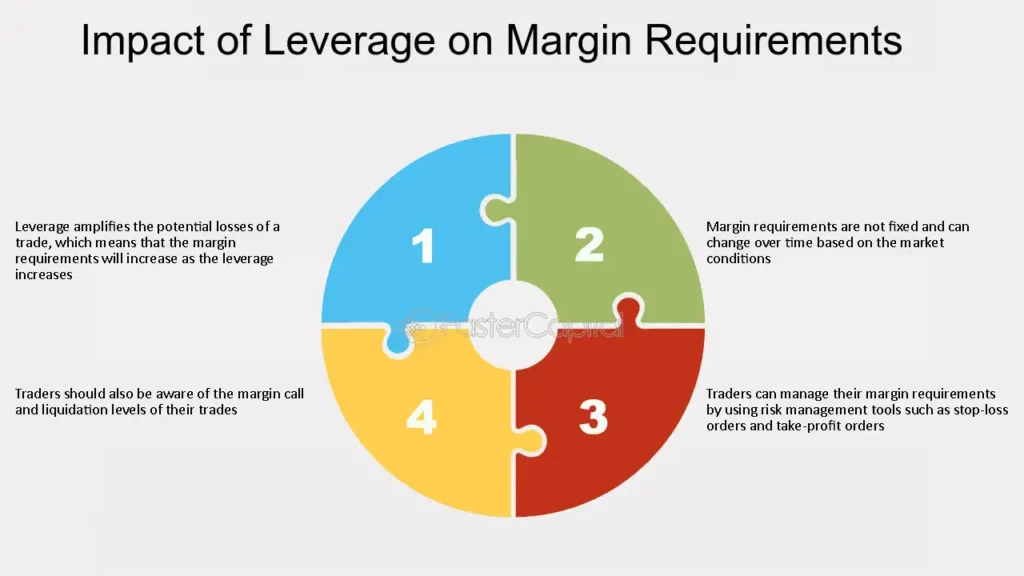
The Impact of Leverage on Trade Outcomes
How Leverage Affects Both Potential Profits and Potential Losses
Leverage is a powerful tool in forex trading that allows traders to increase their market exposure beyond the initial investment. However, while it can magnify profits, it also increases the potential for significant losses, making it a double-edged sword.
Understanding the Mechanics of Leverage
Leverage essentially multiplies your buying power in the market. For example, with a leverage ratio of 100:1, you can control a position worth $100,000 with just $1,000 of your own capital. This ability lets traders capitalize on small price movements to generate substantial profits. Conversely, the same multiplier effect applies to losses if the market moves against the trader’s position.
Real-Life Examples Illustrating the Impact of Different Leverage Levels on Trading Results
Let’s explore a couple of examples to illustrate how different levels of leverage can affect trading outcomes, assuming a trader starts with an initial capital of $1,000.
Example 1: Moderate Leverage Use
- Leverage Ratio: 50:1
- Position Size: $50,000
- Scenario: The trader buys EUR/USD, and the price increases by 1%.
Calculation of Outcome:
- Profit from Price Increase: $50,000 x 1% = $500
- Return on Investment: $500 profit on a $1,000 investment = 50% ROI
In this scenario, a 1% increase in the price results in a 50% return on the initial investment, highlighting how even moderate leverage can significantly amplify returns.
Example 2: High Leverage Use
- Leverage Ratio: 200:1
- Position Size: $200,000
- Scenario: The trader buys GBP/USD, but the price decreases by 0.5%.
Calculation of Outcome:
- Loss from Price Decrease: $200,000 x 0.5% = $1,000
- Return on Investment: $1,000 loss on a $1,000 investment = 100% loss
In this case, a relatively small price decrease results in a complete wipeout of the trader’s capital. This example demonstrates the risky side of high leverage: the same multiplier that can generate huge profits can also lead to substantial losses.
The Importance of Risk Management with High Leverage
These examples underscore the importance of employing robust risk management strategies when using high leverage. Tools such as stop-loss orders, proper position sizing, and regular monitoring of open positions are essential to protect against large, rapid losses. Additionally, traders should always consider their risk tolerance and ensure that the leverage they use aligns with their overall trading strategy and market conditions.
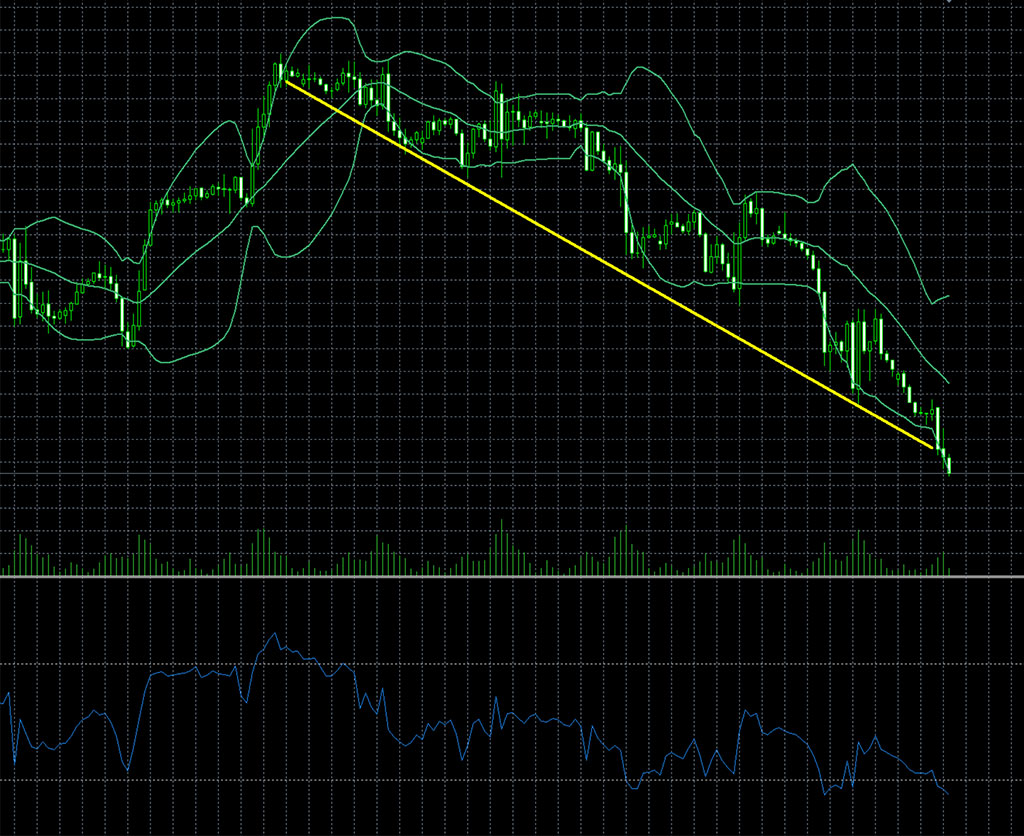
Best Practices for Using EightCap Leverage in Forex Trading
Leverage is a powerful tool in forex trading that can significantly increase profit potential. However, its misuse can lead to equally significant losses. Understanding how to use leverage wisely and effectively is crucial, especially for those new to trading or looking to refine their strategy. Here are some best practices and insights into how professional traders utilize leverage to optimize their trading results without overexposing their capital.
Tips and Recommendations for Using Leverage Wisely
1. Start with Lower Leverage
Starting with a lower leverage ratio can be a prudent approach, especially for new traders. This helps mitigate risk as you get accustomed to the market dynamics.
- Practice with Low Leverage: Use leverage conservatively to understand how it impacts your trades without the risk of substantial losses.
2. Implement Strict Risk Management Rules
Employ clear and strict risk management protocols to protect your capital.
- Stop-Loss Orders: Always set stop-loss orders to limit potential losses on every trade.
- Risk per Trade: Limit the amount of capital risked in each trade, typically no more than 1-2% of your total trading account.
3. Use Adequate Margin Safety
Keep a buffer of unused margin in your account to avoid margin calls, which can occur during periods of increased volatility.
- Margin Buffer: Maintain a healthy margin level above the minimum requirement to safeguard against market gapping or excessive slippage.
4. Regularly Review and Adjust Leverage Based on Market Conditions
Market conditions can change rapidly. Adjust your leverage and positions accordingly to stay aligned with current volatility and risks.
- Adjust for Volatility: Reduce leverage during high volatility periods to minimize risk and manage potential losses more effectively.
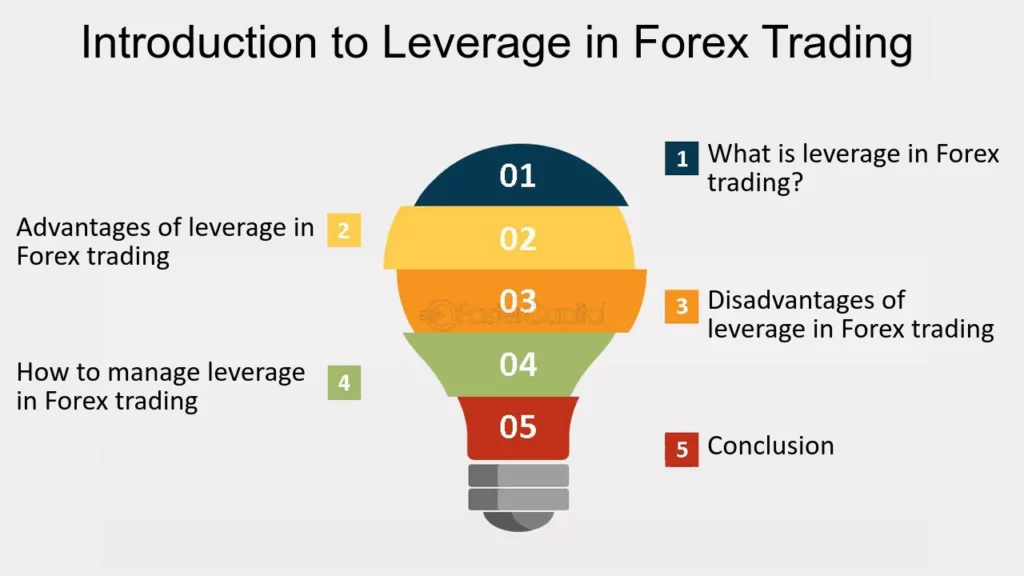
Insights into How Professional Traders Utilize Leverage
1. Leverage as a Function of Experience and Success Rate
Professional traders adjust their leverage based on their trading experience and success rate.
- Proven Strategies: They might use higher leverage for strategies that have consistently yielded profits over time.
- New Strategies: Conversely, when testing new strategies, they often reduce leverage to minimize potential losses.
2. Combining Leverage with Comprehensive Market Analysis
Professional traders combine high leverage with robust market analysis and trading setups that have a high probability of success.
- In-depth Analysis: Before executing a trade with higher leverage, professionals ensure their decisions are backed by thorough analysis and solid market indicators.
3. Continuous Education and Scenario Planning
Ongoing education and preparedness are key to effective leverage use.
- Market Scenarios: Professionals prepare for different market scenarios, understanding how shifts in market conditions might affect their leveraged positions.
- Education: They stay updated on market trends, economic indicators, and geopolitical events that could affect currency movements.
4. Emotional Discipline
Maintaining emotional control is crucial when using leverage, as decisions based on fear or greed can lead to significant losses.
- Discipline Over Emotion: Successful traders stick to their trading plans and don’t let emotions dictate their leverage decisions.
Leverage Policies and Regulatory Compliance
Leverage is a critical feature in forex trading, but it’s also heavily regulated due to its potential to amplify risks significantly. Various financial authorities around the world have set restrictions on leverage to protect traders and promote market stability. This chapter will explore the regulatory restrictions on leverage, focusing on how these affect EightCap clients.
Regulatory Restrictions on Leverage
Regulatory bodies in different countries impose varying limits on the amount of leverage that brokers can offer to traders. These regulations aim to balance the opportunities for profit with the risks of significant losses, especially for retail traders.
Major Regulatory Bodies and Their Leverage Caps
- European Securities and Markets Authority (ESMA): For countries within the European Union, ESMA has set a cap on leverage at 30:1 for major currency pairs and even lower for non-major pairs, gold, and certain types of CFDs.
- Commodity Futures Trading Commission (CFTC) and National Futures Association (NFA) in the United States: The leverage available to retail forex traders is capped at 50:1 on major currency pairs and 20:1 for minors.
- Australian Securities and Investments Commission (ASIC): Recent updates have reduced maximum leverage offered to Australian retail clients to 30:1 for major currency pairs.
- Financial Conduct Authority (FCA) in the UK: Similar to ESMA, leverage for forex trades is capped at 30:1 for major currency pairs.
These limits reflect a growing trend among regulatory authorities to tighten leverage conditions in the interests of protecting consumers.
How Regulatory Restrictions Affect EightCap Clients
Impact on Leverage Options
EightCap, like all brokers operating in regulated environments, must adhere to these leverage caps, which directly impacts the leverage options available to their clients:
- Clients in the EU and UK: Due to ESMA and FCA regulations, EightCap clients from these regions can access maximum leverage of 30:1 for major forex pairs.
- Clients in Australia: Following ASIC’s guidelines, Australian clients also face similar restrictions to those in the EU and UK.
- Clients from Other Regions: The available leverage might be higher for clients in regions with less stringent regulations, potentially up to 500:1, depending on the specific rules of the jurisdiction.
Adapting to Different Regulatory Environments
EightCap ensures compliance through various measures:
- Risk Warnings: Clear communication with clients about the risks associated with leverage in forex trading.
- Account Settings: Automatic adjustments in the trading platform to conform with the regulatory requirements applicable to each client’s location.
- Educational Resources: Providing educational materials and tools to help clients understand leverage and the regulations that affect their trading activities.
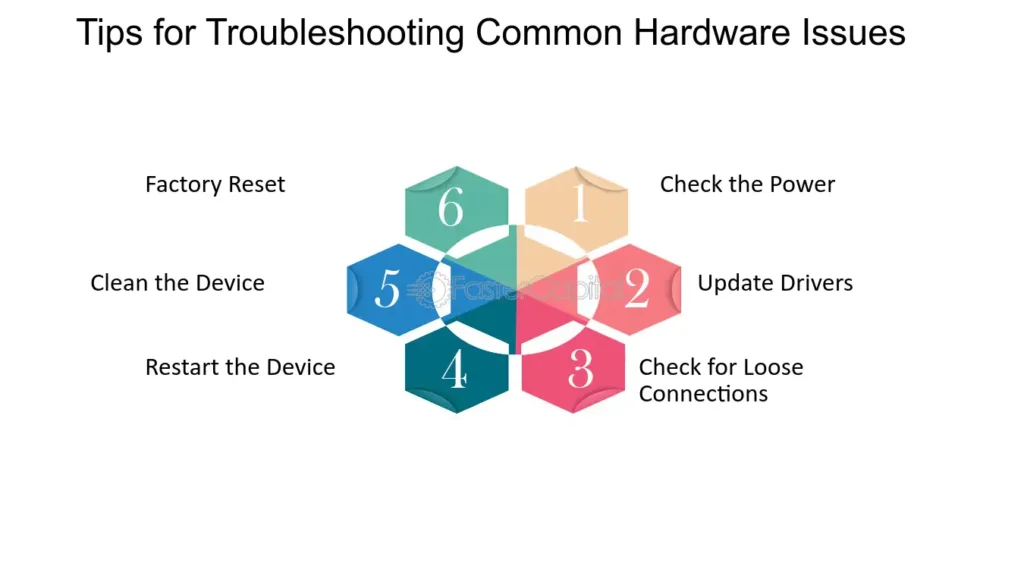
Troubleshooting Common Leverage Issues
Leverage in forex trading can dramatically increase the potential for profit, but it also amplifies the risks, which can lead to common pitfalls and issues. Understanding these challenges and knowing how to manage them effectively is crucial for maintaining a healthy trading approach. Here are some common problems traders face when using leverage and how to avoid or address them.
Common Pitfalls and How to Avoid Them
Over-Leveraging
Problem: Traders often fall into the trap of using too much leverage, which can lead to significant losses, especially with small adverse movements in the market.
Prevention:
- Proper Risk Management: Use stop-loss orders to limit potential losses.
- Prudent Leverage Use: Opt for a lower leverage ratio that aligns with your risk tolerance and trading strategy.
Inadequate Margin
Problem: Failing to maintain adequate margin can result in a margin call, where you must either fund your account further or close positions to meet the minimum margin requirement.
Prevention:
- Monitor Margin Levels: Regularly check your account’s margin level, especially during volatile market conditions.
- Balance Trade Size: Ensure your trade size is manageable in relation to your account balance.
What to Do If You Face a Margin Call
A margin call occurs when your account balance falls below the broker’s required minimum margin, primarily due to open positions moving against you. Here’s how to handle it:
Immediate Actions to Take
- Deposit Additional Funds: If possible, deposit more money into your account to meet the margin requirements and maintain your open positions.
- Close Some or All Open Positions: If you cannot fund your account further, consider closing some or all of your positions to reduce the margin requirement.
- Reassess Your Trading Strategy: Use this as an opportunity to review and adjust your trading strategy, particularly your use of leverage and risk management measures.
What to Do If You Exceed Your Leverage Limits
Exceeding leverage limits can occur if you miscalculate the size of the position relative to your account balance or if the broker changes the leverage limits in response to new regulatory requirements.
Steps to Resolve
- Adjust Your Positions: Reduce the size of your open positions to bring your account back within the allowable leverage limits.
- Contact Your Broker: If there’s confusion or a dispute over leverage settings, contact your broker’s support for clarity and guidance.
- Stay Informed: Keep abreast of any announcements from your broker regarding changes in leverage or margin requirements, especially those prompted by regulatory changes.
Advanced Strategies for Experienced Traders
Experienced traders often employ advanced trading strategies that make effective use of high leverage to maximize their returns. These strategies involve a deep understanding of market mechanisms, robust risk management, and precise timing. Below, we explore several advanced strategies and present case studies on successful leverage use in complex trading scenarios.
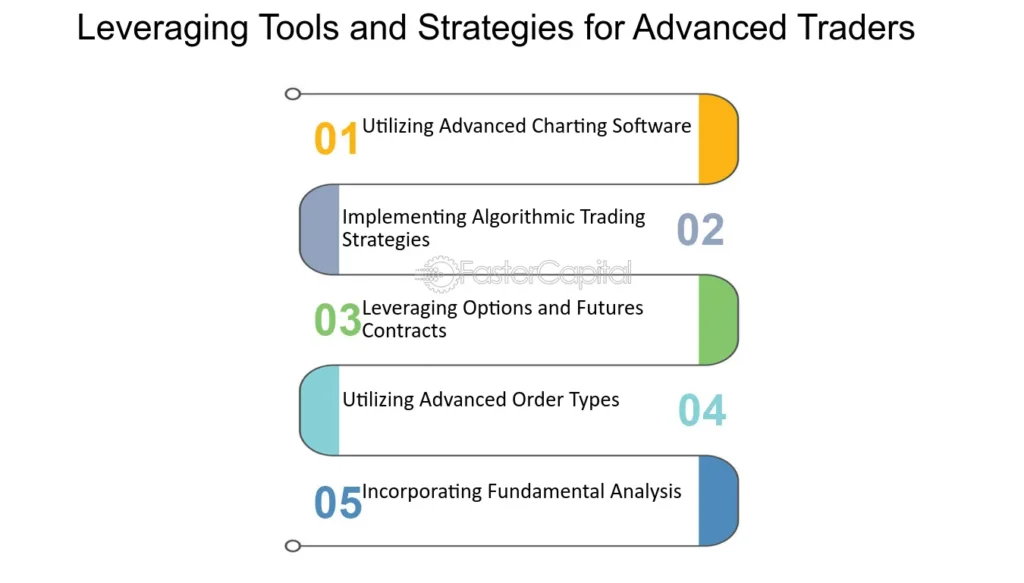
Leveraging Advanced Trading Strategies
Scalping
Strategy Description:
Scalping is a strategy used by traders to capitalize on small price changes. Traders who use this technique place anywhere from tens to hundreds of trades in a single day in the belief that small price moves are easier to catch than large ones.
Leverage Use:
- High leverage is often used in scalping to maximize the profits from these small price increments. However, due to the high number of trades, risk management must be impeccable to avoid large cumulative losses.
Carry Trade
Strategy Description:
The carry trade involves borrowing or selling a currency with a low interest rate to purchase a currency that yields a higher interest rate, thus profiting from the interest differential.
Leverage Use:
- Leverage amplifies the interest differential gains which can be substantial on large positions funded with borrowed money. It’s crucial to monitor currency fluctuations as adverse movements can erase interest gains.
Day Trading with High Leverage
Strategy Description:
Day trading involves entering and exiting positions within the same trading day. Traders capitalize on small, intra-day market movements.
Leverage Use:
- High leverage allows day traders to significantly increase their exposure, enhancing potential profits from minimal price changes. This requires close monitoring of positions and quick reaction to market movements.
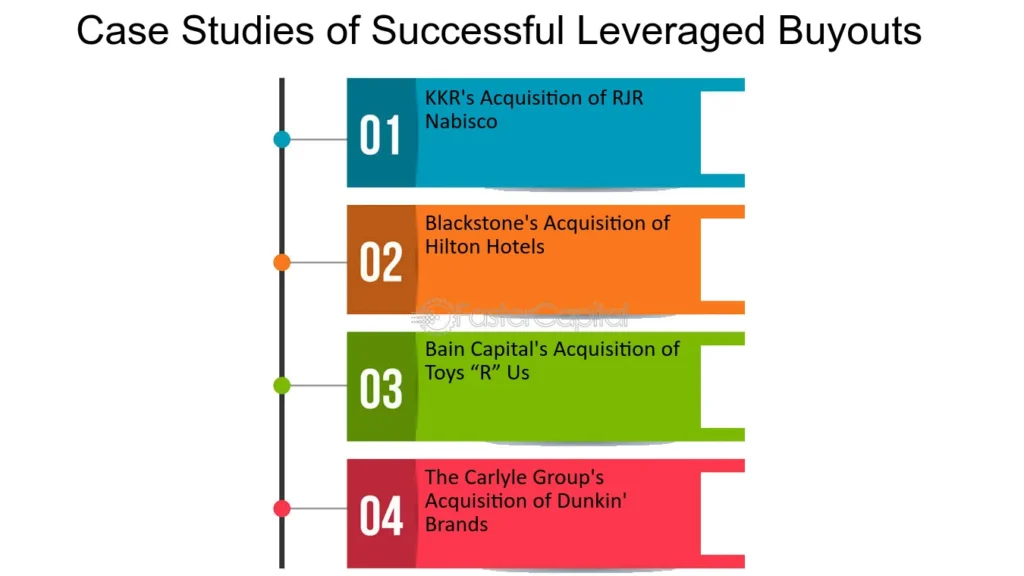
Case Studies on Successful Leverage Use
Case Study 1: Scalping EUR/USD
Scenario:
An experienced trader uses 100:1 leverage to scalp the EUR/USD currency pair. They anticipate small price movements based on real-time economic data releases.
Execution:
- The trader sets tight stop-losses for each trade to minimize potential losses. They use technical indicators to identify short-term upward trends and resistance breakouts.
- The trader successfully makes multiple small gains, which, when aggregated and amplified by leverage, result in substantial profits.
Case Study 2: Carry Trade with AUD/JPY
Scenario:
A trader identifies an opportunity in the carry trade between the Australian Dollar (AUD) and the Japanese Yen (JPY), where AUD has a higher interest rate relative to JPY.
Execution:
- Using 50:1 leverage, the trader borrows JPY to buy AUD, exploiting the interest rate differential.
- The strategy proves successful over several months as the interest gain offsets the transaction costs and any negative price movements are minimal and manageable.
Risk Management in Advanced Strategies
In both cases, and indeed in all high-leverage scenarios, risk management is paramount:
- Stop-Loss Orders: Vital for protecting against market reversals, especially when using high leverage.
- Diversification: Reducing risk by not allocating all capital to a single strategy or currency pair.
- Continuous Monitoring: Leveraged positions require constant monitoring due to their vulnerability to rapid price changes.

